Related Research Articles

The Central Park jogger case was a criminal case concerning the assault and rape of Trisha Meili, a woman who was running in Central Park in Manhattan, New York, on April 19, 1989. Crime in New York City was peaking in the late 1980s and early 1990s as the crack epidemic surged. On the night Meili was attacked, dozens of teenagers had entered the park, and there were reports of muggings and physical assaults.
Innocence Project, Inc. is a 501(c)(3) nonprofit legal organization that works to exonerate the wrongly convicted through DNA testing and other forms of post-conviction relief, as well as advocate for criminal justice reform to prevent future injustice. The group cites various studies estimating that in the United States between 1% and 10% of all prisoners are innocent. The Innocence Project was founded in 1992 by Barry Scheck and Peter Neufeld who gained national attention in the mid-1990s as part of the "Dream Team" of lawyers who formed part of the defense in the O. J. Simpson murder case.
David Milgaard was a Canadian man who was wrongfully convicted for the 1969 rape and murder of nursing student Gail Miller in Saskatoon and imprisoned for 23 years. He was eventually released and exonerated. Up until his death, he lived in Alberta and was employed as a community support worker. Milgaard was also a public speaker who advocated for the wrongfully convicted and for all prisoners' rights.
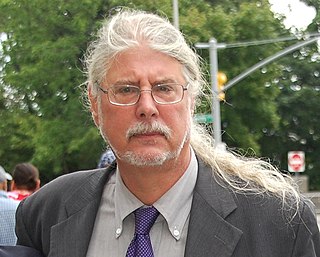
Ronald L. Kuby is an American criminal defense and civil rights lawyer, radio talk show host, and television commentator. He has hosted radio programs on WABC (AM) in New York City and Air America radio.
A false confession is an admission of guilt for a crime which the individual did not commit. Although such confessions seem counterintuitive, they can be made voluntarily, perhaps to protect a third party, or induced through coercive interrogation techniques. When some degree of coercion is involved, studies have found that subjects with highly sophisticated intelligence or manipulated by their so-called "friends" are more likely to make such confessions. Young people are particularly vulnerable to confessing, especially when stressed, tired, or traumatized, and have a significantly higher rate of false confessions than adults. Hundreds of innocent people have been convicted, imprisoned, and sometimes sentenced to death after confessing to crimes they did not commit—but years later, have been exonerated. It was not until several shocking false confession cases were publicized in the late 1980s, combined with the introduction of DNA evidence, that the extent of wrongful convictions began to emerge—and how often false confessions played a role in these.

The Baltimore Police Department (BPD) is the municipal police department of the city of Baltimore, Maryland. Dating back to 1784, the BPD, consisting of 2,935 employees in 2020, is organized into nine districts covering 80.9 square miles (210 km2) of land and 11.1 square miles (29 km2) of waterways. The department is sometimes referred to as the Baltimore City Police Department to distinguish it from the Baltimore County Police Department.
Wrongful execution is a miscarriage of justice occurring when an innocent person is put to death by capital punishment. Opponents of capital punishment often cite cases of wrongful execution as arguments, while proponents argue that innocence concerns the credibility of the justice system as a whole and does not solely undermine the use of the death penalty.
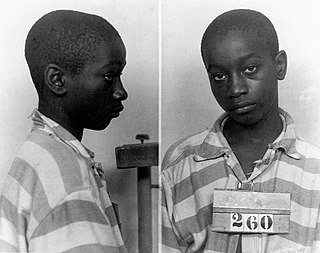
George Junius Stinney Jr. was an African American boy who, at the age of 14 was convicted and then executed in a proceeding later vacated as an unfair trial for the murders of two young white girls in March 1944 – Betty June Binnicker, age 11, and Mary Emma Thames, age 8 – in his hometown of Alcolu, South Carolina. He was convicted, sentenced to death, and executed by electric chair in June 1944, thus becoming the youngest American with an exact birth date confirmed to be both sentenced to death and executed in the 20th century.
Ray Krone is an American who was wrongfully convicted of murder. He was the 100th inmate exonerated from death row since the death penalty in the United States was reinstated in 1976.
This is a list of notable overturned convictions in Canada.
Ricky Jackson, Ronnie Bridgeman and Wiley Bridgeman are African Americans who were wrongfully convicted of murder as young men in Cleveland, Ohio, in 1975 and sentenced to death. Their sentences were commuted to life imprisonment in 1977. They were imprisoned for decades before each of the three was exonerated in late 2014. Jackson and Wiley Bridgeman were released that year.

Hae Min Lee was a Korean-American high school student who went missing on January 13, 1999, in Baltimore County, Maryland, before turning up dead on February 9, 1999, when her corpse was discovered in Leakin Park, Baltimore. Her autopsy revealed that she had been killed by way of manual strangulation.
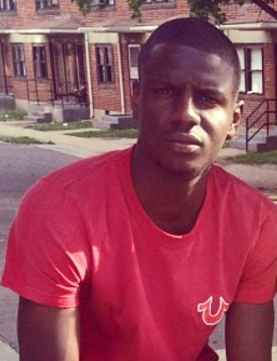
On April 12, 2015, Freddie Carlos Gray Jr., a 25-year-old African American, was arrested by the Baltimore Police Department for possession of a knife. While in police custody, Gray sustained fatal injuries and was taken to the R Adams Cowley Shock Trauma Center. Gray's death on April 19, 2015, was ascribed to injuries to his cervical spinal cord.
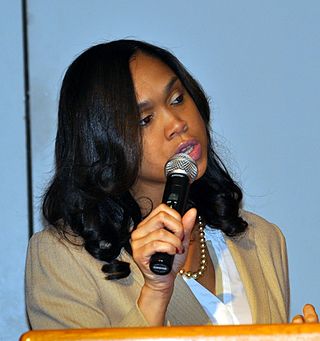
Marilyn Mosby is an American politician and lawyer who served as the State's Attorney of Baltimore from 2015 to 2023. She was the youngest state prosecutor for any major city in the United States. Mosby gained national attention following the killing of Freddie Gray in 2015, after which she led a highly publicized investigation and unsuccessful murder prosecution of the police officers who arrested and transported Gray.
On July 18, 2013, Tyrone West, a 44-year-old African American male, was pursued by two officers of the Baltimore Police Department after he fled a traffic stop during which cocaine was allegedly found. The cocaine later went missing in police possession after a subpoena was issued. West was on parole at the time of this incident with an extensive criminal record including assault, resisting arrest, and attempted first-degree murder. West ultimately died during the scuffle with police and various medical experts have given conflicting assessments of contributing factors including cardiac arrhythmia, dehydration, positional asphyxia, and extreme environmental temperatures.
Korey Wise is an American activist who travels the United States advocating for criminal justice reform. Wise shares his stories of being wrongfully convicted in the Central Park jogger case for the attack on Trisha Meili, a 28-year-old white woman who was jogging in Central Park, as well as attacks on eight other people on the night of April 19, 1989. Wise spent approximately 14 years incarcerated, maintaining his innocence from 1989 until he was exonerated in 2002.
Muhammad Abdul Aziz is an American man who was convicted, and later exonerated, for the 1965 assassination of Malcolm X – a conviction that was overturned in November 2021, decades after he was paroled in 1985. Aziz maintained his innocence; and Mujahid Abdul Halim, who confessed to the murder, insisted that Aziz and Khalil Islam, another man who was convicted along with them, were innocent.
Kevin Bernard Strickland is an American man who was wrongfully convicted by an all-white jury in 1979 of killing three people in Kansas City, Missouri. No physical evidence linked him to the scene of the crime and the only alleged witness later recanted her testimony that Strickland was involved, stating that she was coerced by police. Strickland was given a life sentence. In 2021, he garnered national attention after former prosecutors in his case said that he was innocent and called for his release.
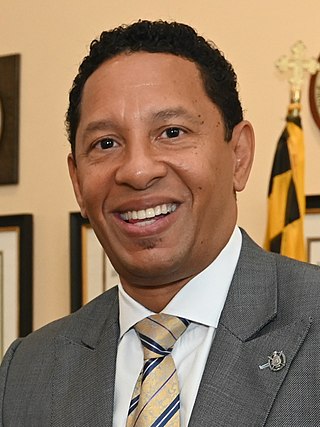
Ivan Jules Bates is an American politician and lawyer who has served as the State's Attorney of Baltimore since 2023.
References
- 1 2 Fletcher, Michael; Birch, Doug (November 19, 1983). "Police hunting suspect in murder at school". The Evening Sun . pp. 1, 2. Retrieved January 24, 2025– via Newspapers.com.
- 1 2 3 4 5 6 7 8 Gonnerman, Jennifer (October 25, 2021). "When a Witness Recants". The New Yorker . Retrieved October 20, 2023.
- ↑ Fletcher, Michael (November 24, 1983). "3 youths charged in slaying over jacket". The Evening Sun . p. 1. Retrieved January 24, 2025– via Newspapers.com.
- ↑ McCord, Joel (November 25, 1983). "3 teenagers charged in Harlem Park case". The Baltimore Sun . pp. 1, 16. Retrieved January 24, 2025– via Newspapers.com.
- ↑ Banisky, Sandy (May 29, 1984). "Jury find 3 guilty in school slaying after deliberating less than 3 hours". The Baltimore Sun . pp. 1, 4. Retrieved January 24, 2025– via Newspapers.com.
- 1 2 "3 Maryland men exonerated after 36 years in prison". The Associated Press . November 25, 2019.
- ↑ Broadwater, Luke (March 4, 2020). "Maryland spending panel votes to pay $8.7 million to three men recently exonerated after each spent 36 years in prison". The Baltimore Sun . Retrieved October 31, 2023.
- ↑ "'Harlem Park 3' file federal lawsuit against Baltimore police". WBAL-TV . August 13, 2020. Retrieved October 21, 2023.
- ↑ "Three men exonerated in 1983 murder file federal lawsuit". The Associated Press . August 13, 2020. Archived from the original on October 21, 2023. Retrieved October 21, 2023.
- ↑ Willis, Adam (October 18, 2023). "Baltimore board approves $48 million settlement for 'Harlem Park Three' wrongful conviction". The Baltimore Banner . Retrieved October 21, 2023.
- ↑ Valera, Dennis; Mattu, Rohan; Thompson, Adam (October 18, 2023). "Baltimore spending board approves $48 million settlement for wrongful conviction of 'Harlem Park Three'". WJZ-TV . Retrieved October 21, 2023.